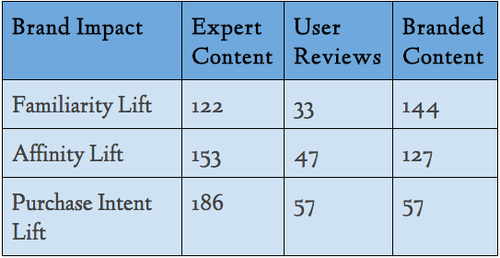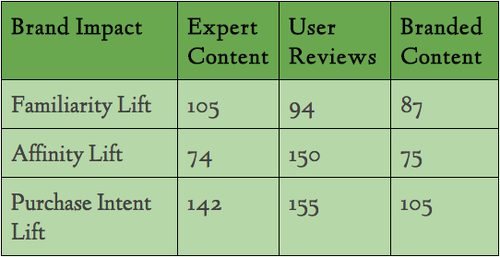Do you offer a high-end product or expensive service? Should you be designing your landing page differently because of it?
The answer, it turns out, is yes.
Price-point matters (who knew!?) in the consumer decision-making process. It also matters in how you design a landing page for conversions, the elements you need to include, and much more.
This article will discuss the differences, in terms of landing page design, between companies promoting high-end, high-price products and services versus promoting mid-range, low-price products.
Let’s get rolling (in dough!).
Why Money Matters
Landing page traffic is not all created equal. There is a theory in marketing that 80% of a company’s profits come from a crucial 20% of their customer base. These are those customers who (if you’re brick and mortar) you see buying a new car every five years; those customers who have bought exclusively from your dealership for 30 years now and whose children have started to do the same.
These are those customers who (if you’re SaaS or B2B) you got when you were still in an unheated loft with nothing more than a PC you could barely get up the stairs in two trips; that client you bagged when you were still an acne-faced junior accountant at a firm with 14 partners.
Why is the Pareto principle relevant in high-end landing page design? Because you’re designing for that 20%. They’re the ones that up your business’ retention rates and stick with you through server crashes, bug fixes and the Toyota car recall.
This means making your landing pages intuitive, easy-to-navigate, and your business friendly. This means A/B testing, mouse-tracking and heat-mapping to determine what sections are being ignored, what’s resonating, and what elements you need to bring higher, drop lower, or move to the opposite side.
How Price Affects Landing Page Design
High-end services or products are rarely bought immediately upon entering your website. Car buyers want a test-drive (if not four or five). Home-owners need consultation with their bank, multiple walkarounds, the full history of the home and the neighborhood. Businesses need to know they’re getting a positive ROI, entering into a legitimate contract and that your customer service staff will be there should a problem arise.
This means we’re not designing (most of) your landing pages for a concrete sale. We’re designing for a free trial, a one-on-one free demo, a lead submission, a sales call or an appointment booking.
It also means we’re designing for our traffic to fall as much in love with our business as they do the products or services we offer.
Here’s how that affects our landing pages designs:
- Consider color psychology* :* ensure you’re using visually appealing colors that resonate with your target audience.
- Consider the art of selling without selling: promote but don’t push, soft-sell, and make it 100% evident how your possible lead is getting a far better deal out of engagement than your business is.
- Make it personal for your traffic: Selling a winter jacket to someone who’s cold is easy; it’s far harder to sell an expensive software tool to someone who isn’t even entirely sure they need it (or what it does). Make it clear what problems you’re solving, and remind your traffic how those problems affect them personally or professionally.
- Make your business friendly : Many B2B companies, SaaS, and high-end product or service providers are in direct competition with equally talented businesses with the same resources, staff, and unique selling points. So what makes your business different? Usually, it’s your people. Sell your traffic on your business’ personality and you’ll increase trust, increase conversions, and watch your business’ retention rates hit the roof.
How Price Affects Landing Page Elements
The landing page elements you need don’t change for higher cost brands vs lower-priced services and products. What they look like, however, may.
Here’s how price affects your landing page elements:
- Don’t be afraid to ask for more information (form fields) : A one-on-one demo of your tools, for instance, is often an incredibly valuable thing. An experienced customer success lead may be able to save your clients thousands and thousands of dollars in that demo, so don’t be afraid to ask for more information in your form fields. Talk to your sales team and figure out what details matter in their sales process (company size, job title, biggest marketing issue, etc.)
- Use jargon where necessary (in your USP for instance): For higher cost-goods and services, don’t worry about using words that are unknown to the masses. It’s probable that your truly valuable leads are those who understand the jargon you use anyway. Leads who don’t understand sector-specific language may not actually be valuable in the long run.
- Trust symbols: I’ll go into this a bit more with customer testimonials below, but it’s essential that (where you can) you use as many trust symbols as possible. When a lead is investing large amounts of money towards your product or service, they want to know it’s a wise investment. Show the large, household name brands you’ve worked with before. Showcase the awards you’ve won and official partners you have clearly and obviously.
And here’s how price affects your landing page sales campaign:
- Focus on professional color scheme* s.* Avoid bright colors in favor of more sincere tones like grey, black, and dark blue. CTA’s should be green or orange rather than red.
- Err on the side of caution rather than releasing a campaign too early. Don’t start promoting a sales campaign (ads, landing pages, email marketing automation) before they’re ready. The “move fast and break stuff” works for your burgeoning competitors, not you.
- Keep up with the times. Higher cost brands shouldn’t skint on their marketing budgets so long as you’re receiving a positive ROI. Implement advanced landing page strategies that your competitors may not know about yet (like automatic exit-pop-ups, pre-filled form fields, retargeting campaigns, auto-register links, etc).
How Price Affects Customer Testimonials
Normally this would also be the section where I’d talk about how you need to use customer testimonials to convince your landing page traffic to convert.
However, studies are showing that, when it comes to high-price products or services, user reviews (or reviews from “people like you”) aren’t actually as influential as they are for low-price products.
Here’s the effect of different types of content on high-end purchase decisions (from a 2014 Nielsen report):

And here’s the effect of different types of content on mid-range and low-price products and services:

What does this tell us?
For higher cost brands, it’s far more important for your testimonials to come from clients who are recognized authorities or impartial experts. Don’t focus on previous customers that will relate with your possible customers. Focus, instead, on previous customers that are looked up to and trusted (whether that’s because of a job title, a recognizable brand name, or an impressive pedigree).
Conclusion
Hopefully that’s given you some insight into how the landing pages of higher cost brands should differ from those of other businesses. Remember to test your customer testimonials carefully to see the format that resonates most with your target market.
Further Reading:
- Landing Pages: The Fundamentals and Conversion Principles
- How to A/B Test your Landing Page to Maximize Conversions
- Landing Pages: 5 Details that Make the Conversion Difference
- Landing Pages: The Science Behind Designing for Conversion
If you have any questions, start the conversation below!
By James Scherer
